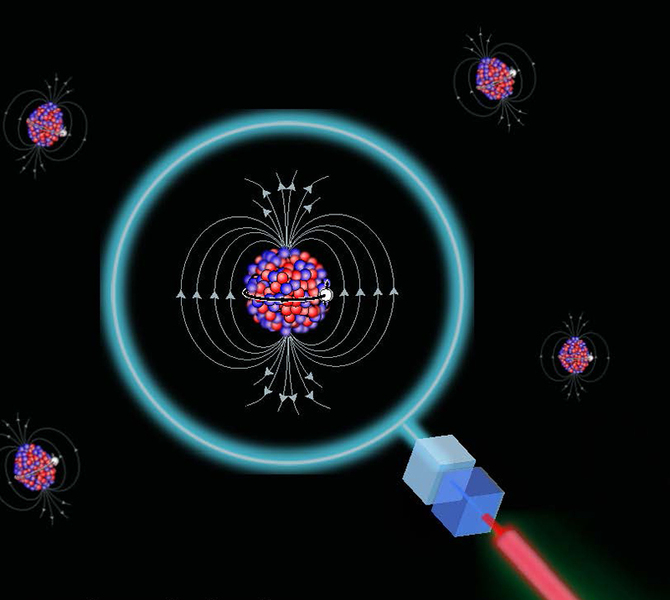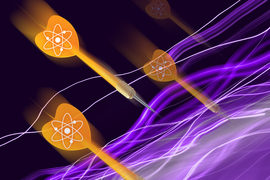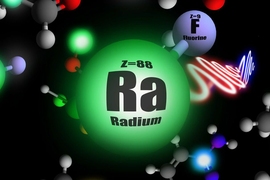A curious thing happened when MIT researchers Adam Vernon and Ronald Garcia Ruiz, along an international team of scientists, recently performed an experiment in which a sensitive laser spectroscopy technique was used to measure how the nuclear electromagnetic properties of indium isotopes evolve when an extreme number of neutrons are added to the nucleus. These nuclei do not exist in nature, and once created, their lifetimes can be as short as a fraction of a second, so the team artificially created the nuclei using a particle accelerator at the CERN research facility in Switzerland. By using a combination of multiple lasers and an ion trap, the team isolated the isotopes of interest and performed precision measurements of atoms containing these exotic nuclei. In turn, it allowed the extraction of their nuclear properties.
Vernon, a postdoc in the Laboratory for Nuclear Science (LNS); Garcia Ruiz, an assistant professor of physics and LNS affiliate; and their colleagues achieved a surprising result. When measuring a nucleus with a certain “magic” number of neutrons — 82 — the magnetic field of the nucleus exhibited a drastic change, and the properties of these very complex nuclei appear to be governed by just one of the protons of the nucleus.
“The new observation at 82 total neutrons changes this picture of the nucleus. We had to come up with new nuclear theories to explain the result,” says Vernon.
The motion of protons and neutrons orbiting inside the atomic nucleus generates a magnetic field, effectively turning the nucleus into a femtometre-scale (one-quadrillionth of a meter) magnet. Understanding how nuclear electromagnetism emerges from the underlying fundamental forces of nature is one of the major open problems of nuclear physics.
The nuclear electromagnetic properties of indium isotopes (nuclei with the same atomic number but different number of neutrons) are considered a particularly intriguing example in nature. With 49 protons, and between 60 and 80 neutrons, the electromagnetic properties of indium isotopes appear to be governed by just one proton, regardless of the number of even neutrons.
“The electromagnetic properties of indium isotopes have been considered a textbook example in our understanding of nuclear structure,” states Garcia Ruiz, who leads research on laser spectroscopy experiments of atoms and molecules containing short-lived nuclei within LNS’s Exotic Molecules and Atoms Lab.
Two state-of-the-art “ab-initio” and “density functional theory” calculations for the atomic nucleus were independently developed by collaborators to describe the experimental results. They showed the magnetic field suddenly changing to be given by a single proton in the nucleus when 82 neutrons was reached, just as the MIT researchers and collaborators observed in the lab.
The researchers' work is described today in a paper in Nature. It serves as a milestone for nuclear physics, as it challenges our previous understanding of these nuclei. Moreover, detailed calculations of the atomic nucleus are highly challenging, especially with large numbers of protons and neutrons such as in this work.
Vernon adds, “It is rare when calculations can investigate the atomic nucleus with such detail, and this is what our observation of this new phenomena enabled.”
The results are an essential step toward a microscopic understanding of the atomic nucleus and the nuclear force, not just important for describing atomic nuclei, but also critical to understanding astrophysical systems such as neutron stars. Their findings provide important guidance to refine theoretical models, which are essential input for a diverse range of studies such as searches for dark matter searches and neutrino physics.
The work was supported under the U.S. Department of Energy Office of Science's Office of Nuclear Physics.









